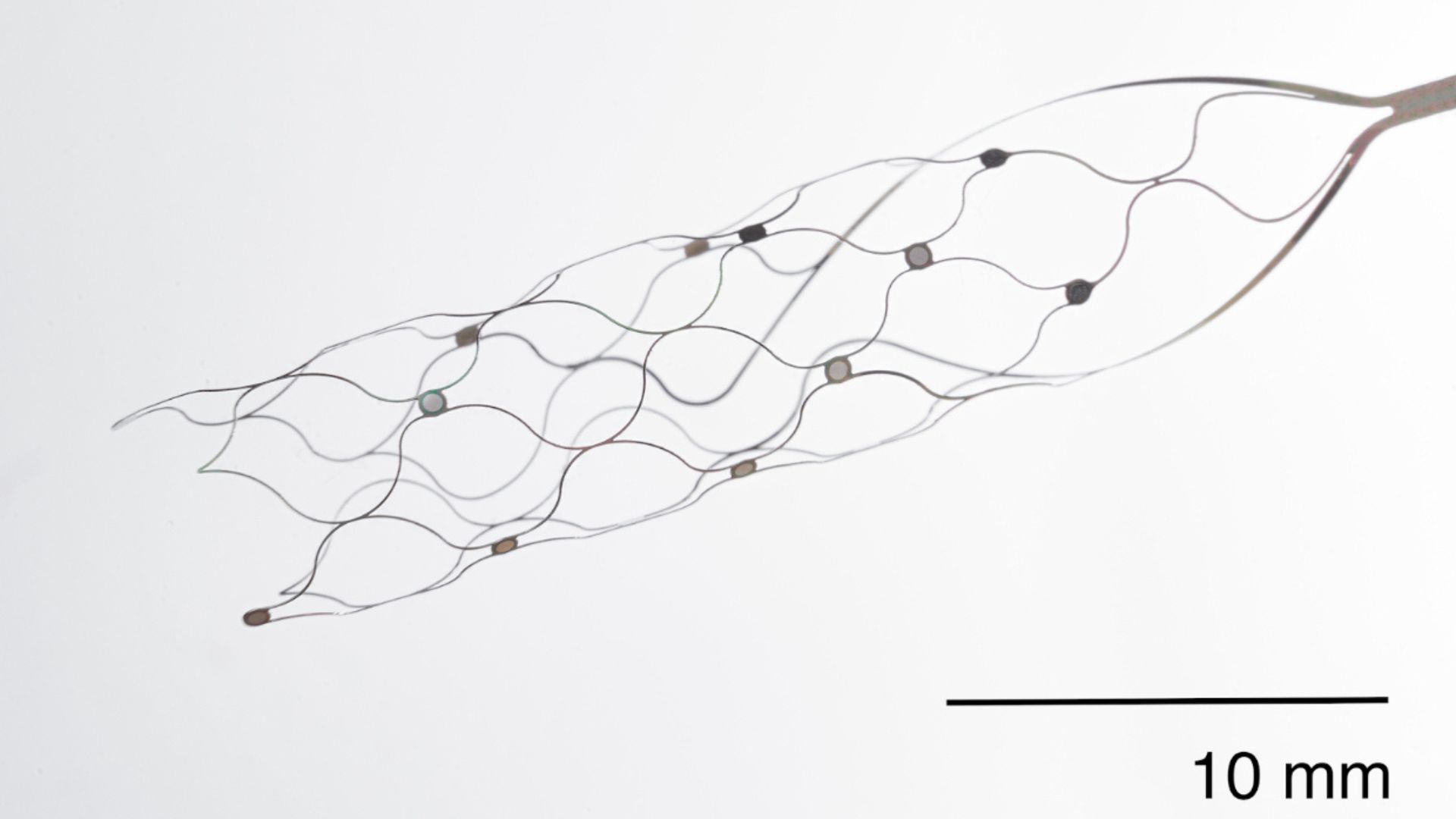New 'thought-controlled' device reads brain activity through the jugular
A new brain-computer-interface device doesn't require open-brain surgery to implant.

After being fed through the jugular vein, a tiny, "thought-controlled" device can record brain activity from a nearby blood vessel, thus eliminating the need for doctors to crack open the skull, a small trial shows.
The device, called Stentrode, is designed to let people with paralysis operate assistive technologies using only their thoughts. For example, trial participants used the device to generate text messages and emails and to do online banking and shopping, according to a new report, published Monday (Jan. 9) in the journal JAMA Neurology. (Early data from the trial were also presented in March 2022 at the American Academy of Neurology's 74th Annual Meeting in Seattle.)
Whereas other mind-reading devices designed for similar purposes are typically placed on top of or within the brain during an open-brain surgery, doctors can implant Stentrode without having to split open a patient's skull, the trial organizers wrote in the report.
"The blood vessels of the brain offer a less invasive route for obtaining access to the motor cortex," an area on the brain's wrinkled surface involved in motor control, they wrote.
The team previously showed that Stentrode could be used in animals to both record signals from the brain and deliver electrical stimulation to the organ, according to The Royal Melbourne Hospital in Australia, an institution involved in the trial. The recent in-human clinical trial — known as the Stentrode With Thought-Controlled Digital Switch (SWITCH) study — was the first to test the device in people.
Related: 1st patient with new 'mind-reading' device uses brain signals to write
The trial involved four men of European descent with amyotrophic lateral sclerosis (ALS), a progressive disease that causes the nerve cells that control voluntary movement to die. At the time of enrollment, all of the trial participants had severe upper-limb paralysis and varying degrees of lung function and speech impairment.
Sign up for the Live Science daily newsletter now
Get the world’s most fascinating discoveries delivered straight to your inbox.
Each participant had Stentrode placed in their superior sagittal sinus, a large vein that drains fluid from the brain into the jugular and lies adjacent to the motor cortex. The device itself is made of a net-like material that contains 16 electrodes; doctors feed the device into the body using a catheter, and once it's in place, they expand the mesh so it lies flush against the walls of the sinus, according to a March 2022 statement from Synchron, the implantable brain-computer-interface (BCI) company behind Stentrode. A wire runs from the electrodes to a small electronic device in the chest, which wirelessly transmits brain signals recorded by the device to a computer.
"The patients all tolerated the procedure well and were typically discharged home within 48 hours," co-principal investigator Dr. Peter Mitchell, director of neurointervention at Royal Melbourne Hospital, said in a separate statement. Only one of the four patients remained in the hospital for an additional day before being discharged, the JAMA report noted.
The most common side effects were headache and bruising at the incision sites, and no one experienced severe side effects during or after the procedure. And in the yearlong follow-up period, no participant experienced blood clots (thrombosis); blood vessel blockage; device "migration," meaning movement of the device in the body; or any other serious side effects related to the device that could lead to death or permanent disability.
Furthermore, "the BCI maintained a stable signal throughout the study, and all participants successfully controlled a computer with the BCI," the authors reported.
"Safety and feasibility data from the first in-human study indicate that it is possible to record neural signals from a blood vessel, and the favorable safety profile could promote wider and more rapid translation of BCI to people with paralysis," the team concluded.

Nicoletta Lanese is the health channel editor at Live Science and was previously a news editor and staff writer at the site. She holds a graduate certificate in science communication from UC Santa Cruz and degrees in neuroscience and dance from the University of Florida. Her work has appeared in The Scientist, Science News, the Mercury News, Mongabay and Stanford Medicine Magazine, among other outlets. Based in NYC, she also remains heavily involved in dance and performs in local choreographers' work.










